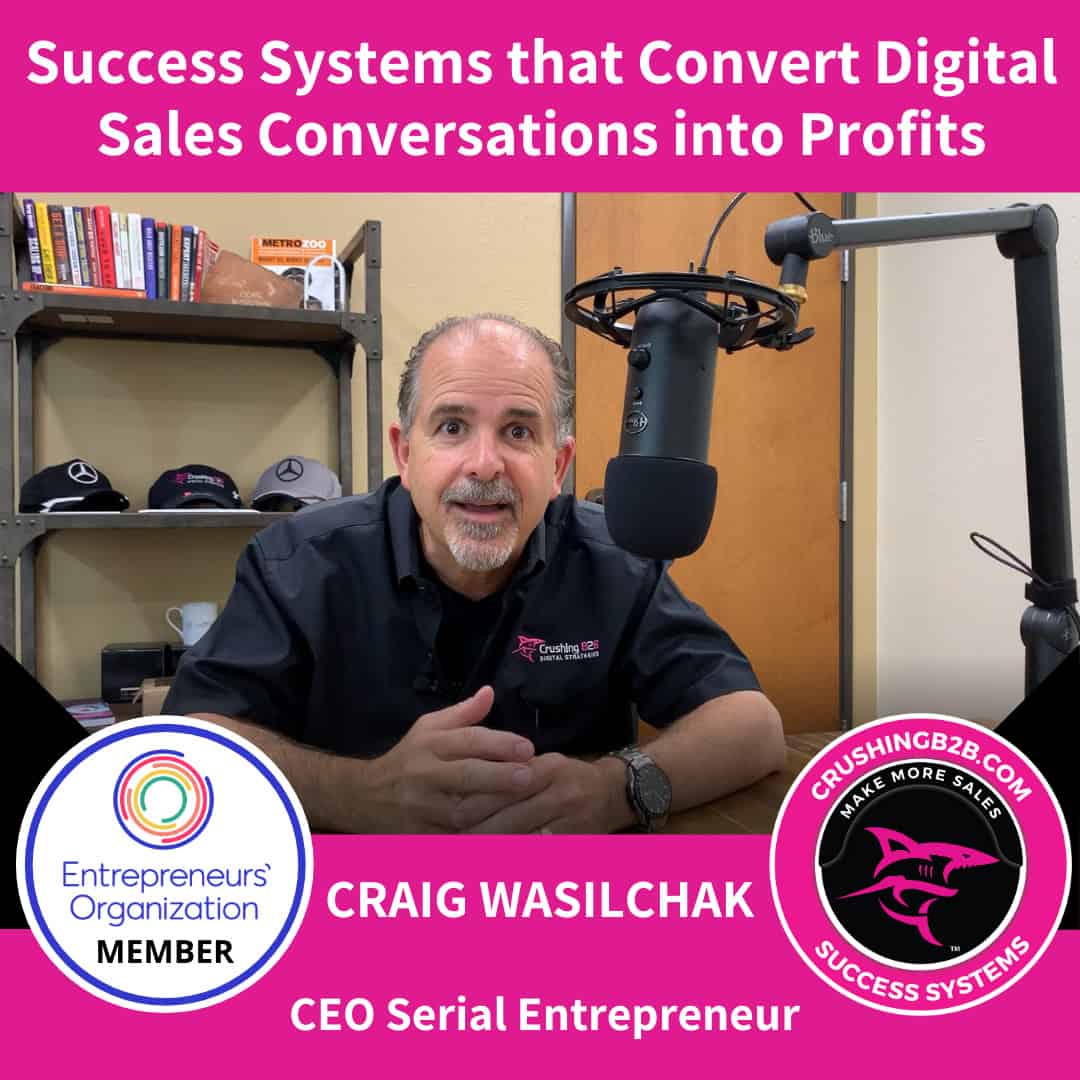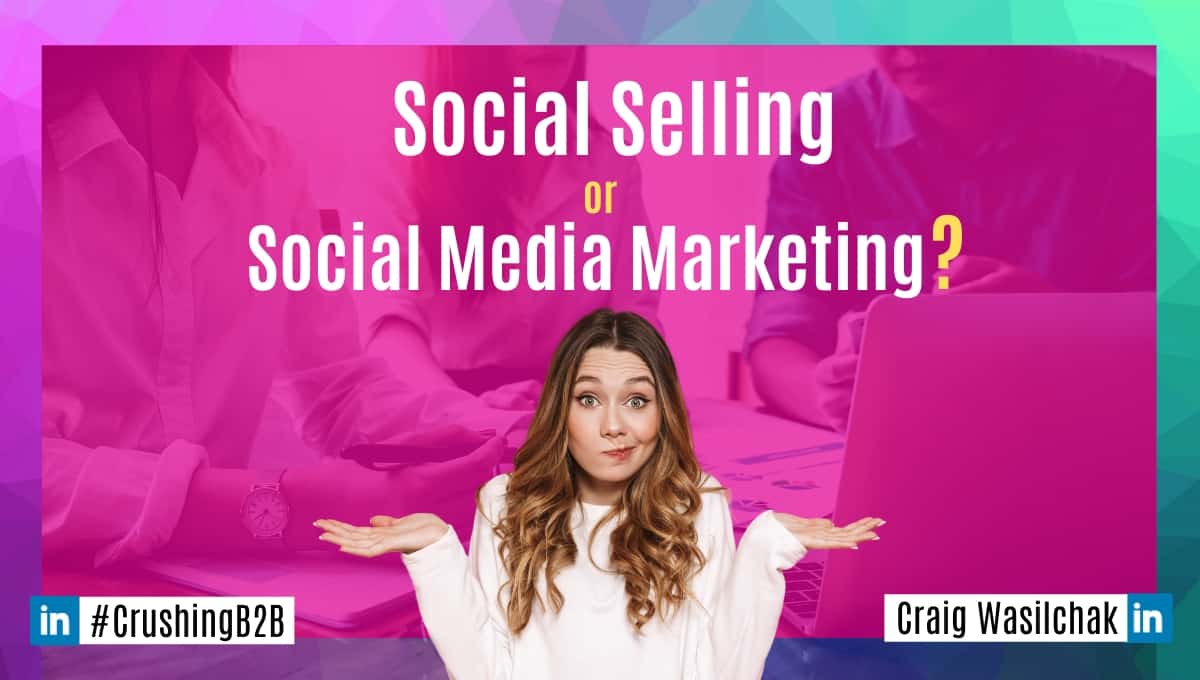B2B social selling is a relatively new term in the sales and marketing landscape. Several companies are already adopting this new tactic, however, not all end up successful.
One thing that hinders a company’s success to implementing a social selling strategy is due to the misunderstanding–or lack thereof–of what B2B social selling really is.
B2B social selling is not selling on social media. Nor can it be compared to social media marketing.
Instead, social selling is a strategy that utilizes social media platforms for outreach and building valuable relationships with prospects. Once these relationships are formed and stabilized, then you can convert these prospects into clients.
Sales Compared to Marketing Roles: Defining the Different Strategies of How Each One Uses B2B Social Media Platforms
As mentioned above, social selling is different from social media marketing.
Social media marketing commonly makes use of social media platforms in three ways. First, it is used to build and solidify brand awareness. Since social media channels have millions of users, it is easy to build a following as long as you publish content that they find interesting and relevant to their challenges.
In line with this, social media marketing also uses B2B social platforms to disseminate information to their target audience. The purpose is to inform, pique interest, and entertain.
Lastly, social media marketing–when done right–can also improve a company’s customer service and experience. Many companies today deploy social media marketing strategies to uplift these two.
On the other hand, a social selling strategy uses B2B social media platforms mainly for prospecting and outreach. LinkedIn has over 660 million users in their platform. A B2B company can see this as a gold mine of potential clients!
Through LinkedIn, your sales reps can learn more about their prospects and make their outreach more personalized. By offering help through valuable content that is relevant to each prospect’s business challenges, your sales reps can successfully build and sustain relationships that will fruit to a sale.

Sales Vs. Marketing: What are the Top Differences Between B2B Social Media Marketing and B2B Social Selling?
Social selling and social media marketing have other differences besides how each utilizes social media networks. Here are their top three differences:
1. Strategy Purpose
Social Media Marketing: The main purpose of social media marketing is to create an awareness to who your brand is and what it does for your target audience. Whatever content you publish is aimed to create a buzz around your company or product. Content is used to claim your authority in your respective industry.
Social Selling: Social selling is used to generate high-quality leads by forming relationships based on trust and value. The main goal here is to capture a prospect’s trust so you can successfully turn him or her to a long-term client.
2. Messaging Approach
Social Media Marketing: Social media marketing incorporates a messaging that is brand-to-many. Content for marketing speaks to a company’s general target audience as its purpose is to showcase what the brand is all about.
Social Selling: Social selling highlights content for sales that has a messaging of brand-to-one in its strategy. The type of content needed for a successful social selling strategy is aimed specifically to a certain target segment or certain titles of prospects.
3. Active Players
Social Media Marketing: From graphics and videos to promotion and written content, your marketing department has the sole responsibility regarding your company’s social media marketing.
Social Selling: The active players of your social selling strategy incorporates three departments–sales enablement, sales, and marketing. Sales enablement will determine the content needs of your salespeople and streamline their production with the marketing department. Although the marketing department will provide the needed content for sales, your sales reps are responsible for disseminating this content in their prospecting.
Top 5 B2B Social Selling and Social Media Marketing Strategies your business needs to implement in order to improve sales
While social selling and social media marketing differ in most ways, there are areas where they can work together to improve sales.
Start with a strategy.
A successful outcome stems from a well-defined strategy. With a B2B digital system strategy that defines the goal and KPI metrics to track, you will be able to track if your efforts are productive or you’re wasting time and money over something that isn’t working for your company.
Delineate your action plan including the lines where social media marketing and social selling will cross one another. By doing so, everyone on your marketing, sales enablement, and sales teams have a clear view of their responsibilities.
Ensure brand consistency across all relevant platforms.
An important aspect in your strategy is brand consistency across all the social media platforms that are relevant for your company. For social media marketing, the main area here are your company pages. Ensure that each social media asset on your all profiles is the same.
For social selling, you need to have brand consistency in your sales reps’ profiles. This shows a unified and professional branding, which buyers on these platforms are more likely to trust. It is important that all your sales reps have optimized LinkedIn profiles that shows who they help and how they can help your company’s target buyers.
Create content for sales.
You’ve probably heard this before, but I’ll say it again… In B2B, content is KING whether it’s for social selling or social media marketing for business. More and more buyers today are actively researching for solutions to their problems online. Therefore, you must offer help through various content types on your profiles. Plus, create specific pieces of content for sales such as whitepapers that your sales team can use for their prospecting.
Leverage B2B social media channels.
Coach your sales team how to leverage these B2B social media platforms for prospecting, outreach, and building their thought-leadership. Thought leadership is important on these channels as buyers are more likely to trust your sales reps if they are confident that your seller is knowledgeable and reliable when it comes to solving their business challenges.
Through B2B social media channels, your sales reps are also able to reach your company’s ideal clients. When using LinkedIn, they can incorporate relevant keywords when using the search bar to find your company’s exact target prospect. Once they find these prospects, your sales reps can do a personalized outreach and provide valuable content. Through LinkedIn, your reps can also find those who are connected to your target prospect and do a social surrounding strategy.
Invest in digital sales training.
You can’t just leave your sales reps by themselves when incorporating a social selling and social media marketing strategy. To become successful, they need to undergo a digital sales training provided by a reliable company who knows the know-how and have a positive track record to prove it.
Also, you can’t expect your sellers to generate high-quality leads in a matter of days or weeks. There is a change in selling mindset and selling behavior needed to become effective social sellers.
Write down your B2B Social Selling Goals: Create a written Annual Digital Selling Strategy to Leverage a Social Branding and Selling System
Social selling and social media marketing are two different branches. For one, the sales department is responsible for deploying a social selling strategy, while the marketing department is accountable for social media marketing. Second, each has a different goal for a company. Lastly, they incorporate a different type of messaging that is important for each of their target audience.
However, there are also areas where both disciplines crossover, which you can optimize to make your salespeople more productive and successful in generating high-quality leads. Plus, with a well-defined digital selling strategy that leverages a social branding and selling system, your pipeline will definitely generate more sales for your company.

About the Author

Craig Wasilchak is the founder and CEO of Crushing B2B Digital Strategies. He is also an active member of the Entrepreneur Organization, as he is the owner of a business earning over $1M in sales annually.
Crushing B2B Digital Strategies is a Dallas-Fort Worth area-based company that teaches CEOs, C-Level Execs, & Entrepreneurs how to grow their business value by using success systems for LinkedIn, other social media platforms, and SEO. Crushing B2B offers a variety of Social Selling & LinkedIn training, Branding & Lead Generation systems that are proven to convert digital sales conversations into profits.
As a B2B Mentor that has extensive skills in Leadership, Mentoring, and Entrepreneurial skills, Craig loves to share his amazing business journey and help others achieve their maximum success.
Craig has built and sold multi-million dollar businesses over the last 25 years. Now, with Crushing B2B Digital Strategies, his goal is to teach other entrepreneurs how to grow and run profitable businesses in a disrupted business world utilizing practical business strategies. If you wish to connect with Craig here on LinkedIn, just send an invite! You are also more than welcome to subscribe to his YouTube Channel “The B2B Lead Generation Movement”.

